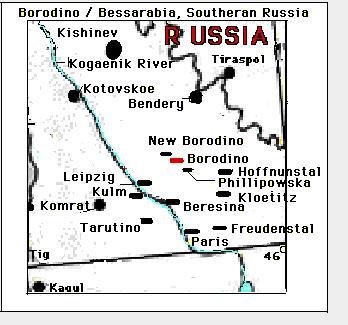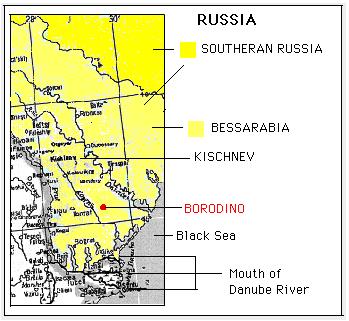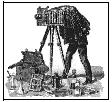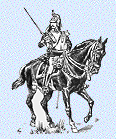|
|
|
  
|
|
|
|
|
|
|
|
Remmick Home Site Index
Page
|
|
|
|

[Click on this logo and you will return to this page.]
|
|
|
|
History of the Remmick, Remick, Remich, Remichius,
Remig, Roemmich, Roemmick, Roemig, Roemigius Families
|
|
|
|
1400s to May 2007
|
|
|
|
E-mail is:
Remmick@aol.com
|
|
|
|
Borodino
Home Site
German-Russian
House Recipes
Lodi Union
HS, Class of 1960 / Memoirs Web Site
|
|
|
|

|
|
|
|
Family Historian is Judy A. Remmick-Hubert
[RemMick@aol.com]
"When a person dies so do his or her memories unless they have told
someone else something about themselves by conversation or with the pen ,
if they have, then they gain an immortality with our help, if
we pass these stories to others. In doing so, we help those who
live, now, or, in the future to know and understand the past.
History is, afterall, a long thread of short stories about people,
places and things from the past to the now and
future."
|
|
|
|

Garry and Judy, nee Remmick,
Hubert
2006
|
|
|
|
Note: Because AOL has closed down theirr Hometown web sites,
there will be many links broken. Sorry for the inconvience,
but, changing all the URLs and placing them into my domain will
take considereable amount of time and effort.
|
|
|
|
A to Z
|
|
|
|
Remmick Home Site Index "A" to "Zzzz":
|
|
|
|

|
BANNER OF FREEDOM
A Poem
by
Judy A. Remmick-Hubert
11 Sept 2001
|

|
Beresan District Odessa Web
Site
-
Newsletters are available for members
|

BOOKS
New Home Site
|
BOOKS
-
Burton Valley Book Club - List of 1997-8, List of 1998-1999
& List of 1999 - 2000
-
Leisure
-
History
-
Austria-Hungary
-
German
-
German-Russian
-
German-Russian-American
-
Herman Roemmich -
Author of Conflict of Three Cultures
Germans from Russia in America, A History of the Jacob Roemich
Family
-
Norwegian
-
Russian
-
Book Shops
|
|
|
|
|
|
|
|
|

|
Memories and Photographs of Edwin Remmick
|
|
|
|
|

Evangelical Lutheran Reform Church in Lodi,CA
|
-
Robert
M. Benson: A Little More History on GR Churches
-
Edenkoben / Landau,
Palatinate, Germany
-
Evangelical Lutheran
Reform Church - Lodi, CA
-
Great Cathedral in
Zurich, Switzerland
-
Lutheran Church of
Borodino / Bess. S. Russia
-
Lutheran Church of
Lodi, CA, USA
-
Sockelhausen
/ Banat, Austria Hungary
-
Speyer's Cathedral,
Speyer, Palatinate, Germany
-
Worms / Odessa. S. Russia
|
|
|
|
|
|
|
|
|
|
|
|
|
|
|
|
|

|
-
Gillg
-
Gilly
-
Heintz
-
Hoehn
-
Hoffer
-
Hott
-
Kammerer
-
Kapp
|
|
|
|
|
|
|
|
|
|

|
For more Information, additions and, or, corrections contact me at:
E-Mail is:
RemMick
@aol.com
|
|
|
|
|
|
|
|
|

|
|

|
German-Russians
plus
Remmick's & Hein Ancestral Russian
Villages
-
List of Russian Colonies - See Bottom of Page
-
August Quast, abt 1912, Villaghe of Plotzk / Bess - Photograph.
-
German-Russian Village Coorindators [VCs]:
Areas Mentioned In More Detail are:
-
Black Sea
-
Crimea [Krim]
-
Georgia
|
|
|
See below: Stories of German-Russians
|
|
|
|
|

RECIPES
German-Russian
House Recipes
Remmick's
Chickens

|
|
|
|
|
|
|
|
|
|
|
|

HOFFER HOME SITE
|
Hoffer
Family Index Page
List:
-
Bader
-
Dockter
-
Fix [Vix]
-
Gaertner
-
Gillg
-
Gilly
-
Heintzin [Heintz]
-
Hoehn
-
Hoffer - You Are There
-
Hutt
-
Kapp
-
Landenberger
-
Metzger
|
-
Naas
-
Naasin
-
Nies
-
Remick [Remmick, Roemmich]
-
Rott
-
Sauter
-
Schneider
-
Senk
-
Thurhammer
-
Vix [Fix]
-
Wanner
-
Wetzler
-
Wolf
-
Wolff
-
Wolfin
|
|
|
|
|
|
..........................
|

|
|
|
|
|
|

|
Holidays [Pagan and Christian Celebrations], Customs, & Traditions
-
Christmas Holidays
-
Easter Holidays
|

|
-
Banat Germans
-
Family in Germany
-
Family in Austria-Hungary
-
Family in USA
-
Garry J. D.Hubert, Esq.'s
-
Norwegian Link
|

|
|
|
|
|
|
|
|
|
|

|
Letters, Newspaper Clippings, & Articles
Plus Interesting E-mails
-
JOURNEY OF WOMEN by Melody Harris
-
Gerald
Ott's Aunt's Story - In Part
-
 LETTERS Remmick Families & Others - Family
Members & Inquiries, E-mails.... LETTERS Remmick Families & Others - Family
Members & Inquiries, E-mails....
-
Lillian,
nee Hein, Remmick's THOSE WERE THE DAYS
-
Bread Days
-
Christmas Time
-
Others
-
Karl Rennich's Story
-
Merv Rennick plus photographs of Waterloo / Od. S. Russia
-
Merv Rennich's Photograph of Worms
-
Where
Did They Go? - Story about Lichtental / Bess. by Don Wolf - Bottom
of page with photogrpah of Wolf home in Germany
-
The Americas Drama at Sea - Letter of Vaclav Miller [Jacob Miller] who
migr. to a town near Rapid City, Iowa
[bottom
of migration page]
-
The
American Drama At Sea - Story of Miller's Voyage on the ship from
Germany to NY, USA in 1894
-
Pre - Revolution Letters
-
Revolution, Bolshseviks and the German-Russian
-
Letters
Describing the Conditions of the German Colonies During the Early Bolshevik
Years
-
5 Oct 1919- Report on conditions of the colonies in Odessa district in the
summer of 1919 by H. Thauberger
-
12 Dec 1920 - Letter from Friedrich Weber from S. Russia
-
30 Sept 1921 - Repoert, The Starvation in Russia by Richard Patzner
-
4 Nov 1921 - Letter from Karlsruhe, S. Russia from family of Friedt
-
10 March 1922 - Letter from Rastadt, S. Russia from family of Reisenauer
-
19 June 1925 from Katharinetal, S. Russia from Valentin Haaf
-
Jacob
Schweikert - Eyes for Crying
-
20 Feb 1923 - Heinrich and Katharina Koenig - One Man's Relgious Quest
& Survival of His Family
-
Those Were
The Days by Lillian Hein Remmick - Montana. Memories,
USA
-
SOURCE , A List
-
German-Russian Tales and Stories - See Stories Section Below
-
Letters
in Hoffer Home Site
-
See Grain Harvest for Canada, USA and
Russia
-
What Is A
Palatine?
-
Linguistic Chart On The German Lanuage
-
German-Russians
Stories
|
|
|
|
|

|
Lodi, California
|

|
|
|
|
|
|
|
|
|
|
|
|
|

|
Migration
- A Quick Reference
[Note: This is found in Borodino
web site]
Hein, Hubert, & Remmick/Roemmich Families
-
Germany
-
Russia
-
USA
-
The Americas Drama at Sea - Letter of Vaclav Miller [Jacob
Miller] who migr. to a town near Rapid City, Iowa
[bottom
of migration page]
|
|
|
|
|
|
|
|
|
|
|
|
|
|
|
|
|
|

|
Palatinate, A German State
|
|
|
|
|

|
|
Families......:
-
Closs [Klass]
-
Ebel
-
Geier
-
Geissler
-
Koschel
-
Orschied
-
Orschitt
-
Pfannkuchen
-
Schmalz
-
Taekfine
-
Weber
|
|
|
|
|

|
-
Photographs
of Russia From Friends - Index Page
-

-
There are more than 500 photographs of person, places and things which
involve not just our Hubert and Remmick families but many Germans who
migrated to Austria--Hungary and Russia & a section on the Hubert's
Norwegians ancestors.
|
|
|
|
|
|
|
|
|

|
|
..........
|
Remmick Family - Generations [Gen.] Index
|
|
|

|
Gen. 1
|
Judy A. Remmick-Hubert m.
Garry J.
D. Hubert
|
|
|

|
Gen. 2
|
Edwin Remmick m.
Lillian Hein
|
|
|

|
Gen. 3
|
Edward Remick b. 1900 m.
(1) Mary Hoffer
|
|
|

|
Gen. 4
|
Jacob Roemmich b. 1851 m. (1) unknown; m.
(2) Katharina Mauch; m. (none)
Pauline, nee
Pfaff, Roemmich / Pauline,
nee, Pfaff, Roemmich
|
|
|

|
Gen. 5
|
W. [Wilhelm] Michael Roemmich b. abt 1820
m. A.[Anna] C.
[Catharina] Maria Ochsner
|
|
|

|
Gen. 6
|
Johan Jacob Roemmich b. 1797 m.
Margaretha Winterrott
|
|
|

|
Gen. 7
|
Philip [Phillip] Karl [Carl]
Roemich b. abt. 1772
m. Catharina
Maria Lingenfelder
|
|
|

|
Gen. 8
|
J. [Johan] Nicholas Remmich b. 1731 m.
Anna Barbara Zuber[in]
|
|
|

|
Gen. 9
|
Johannes Roemmich b.
1679 m. Anna Elizabeth Liebesberg[er]
|
|
|

|
Gen. 10
|
Hans [Johann] Stephen Roemmich
b. 1632 m. Anna Margaretha
|
|
|

|
Gen. 11
|
H. [Heinrich] Laurentius [Lorenz]
Roemich( Roemig /Remig / Remichius / Roemigius) b.
abt. 1595 m. Catharina___N.N._____
|
|
|

|
Gen. 12
|
Leonard Roemich, the younger b.
abt 1570 m. (1) Margaretha Ziegler; m. (2) Catharina ___N.N.____
|
|
|

|
Gen. 13
|
Leonard Roemich, the elder b. abt. 1540
m. Ottilia Nimgern
|
|
|

|
Gen. 14
|
Andreas Roemich [Roemig]
, the elder Councilor in
1543 In Neudstat a. d. Hardt [by the Hardt Moutains] / Palatinate
(Rhineland-Pfalz, Germany) and in 1566 became Buergermeister in Neudstadt
a.d. Hardt b. abt 1505
|
|
|

|
Gen. 15
|
poss. Lorenz Roemig, 10th Count of Leiman
[ in the Heidelberg Kreis up to 1974, presently in Rhein-Necker Kreis
/ Baden-Wuerttemberg] and connected after 1351 to the Counts of
Palatinate
which were members of the
Wittelsbach
family, who ruled Palatinate [Pfalz]
|
|
|
|
|
|
|
|
|
|
List of Roemmichs from "A" to "Zzzz" from St.
Petersberg Russia's Extraction List and Others
|
|
|
|
|
Lists of
15 generqtions of direct ancestors of Judy A. Remmick-Hubert's
|
|
|
|
|
|
|
|
|
|
|
|
|

|
School Days
-
Mary Hoffer
and Edward Remick - One Room School House, USA, n. Streeter, ND, USA
-
Hoffer Children
- One Room School Houses - Werre School, Streeter, ND, USA- abt 1922
-
Stutsman
County N. Dakota School Data
-
Lodi Union HS, Class
of 1960 / Memoirs Web Site
-
Lodi, California, USA
-
Gradess Kindergarten through Senior Year & Reuion Photographs,
Letters and Other Good Stuff.
|
|
|
|
|

|
Stories: German, German-Russian, German-Russian-American,
Rusasian, Others
|
|
|
|
|

|
With A List of Buildings
Plus
Questions and Answers with Stories and Photographs
|
|
|
|
|

|
R-1, R-2, R-100, R-115, Etc.
|
|
|
|
|
|
|
|
|
|

|
by Lillian Hein Remmick
-
Bread Day
-
Cabbage Patch
-
Christmas Time
-
Dog Days
-
Donuts
-
Montana 1922 to 1942
-
Mother's Watermelon
|
|
|
|
|

|
-
Other Villages In More Detail are:
|
|
|
|
|

|
-
Karl Rennich: A story from Merv Rennich
-
Two photographs
|
|
|
|
|
|
|
|
|
|
|
|
|
|
|
|
|
 Web Sites: Web Sites:
|
|
|
|
|
|
|
|
|
|
|
|

|
Cyndi's Web Sites:
|
|
|
|
|

|
Digital Library: Odessa:
|
|
|
|
|
|
|
|
|

|
German-Russian Historical Society
|
|
|
|
|
|
|
|
|
|
|
|
|
Clicking on the links above will take you to
more information and links. Enjoy!!
|
|
|
|
|
|
|
|
|
|
|
|
|






















 See :
See :

































 Web Sites:
Web Sites:
